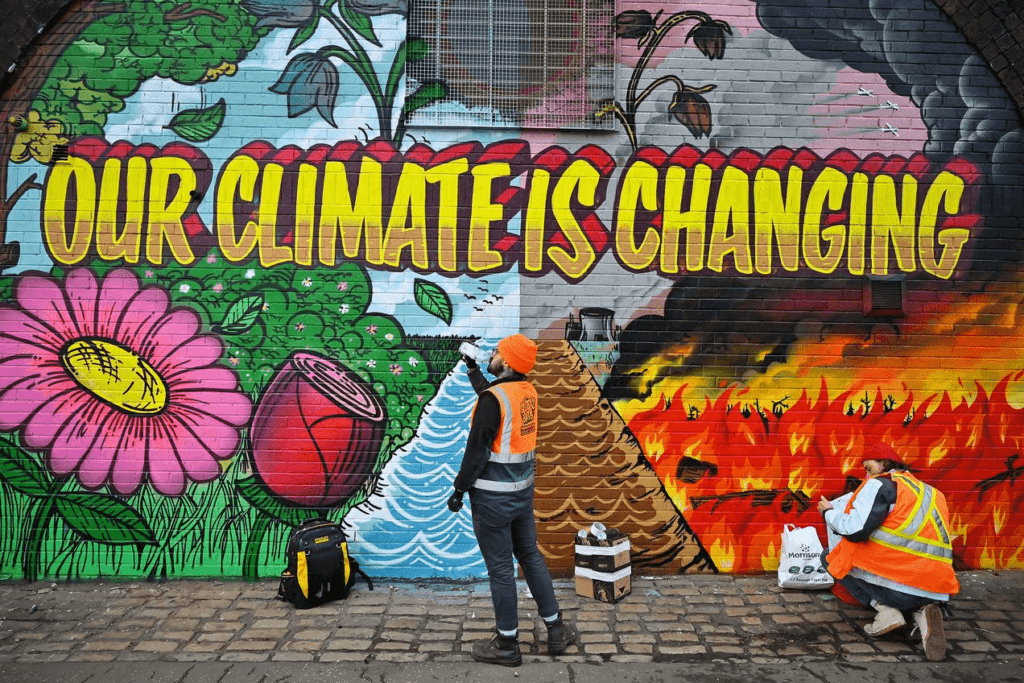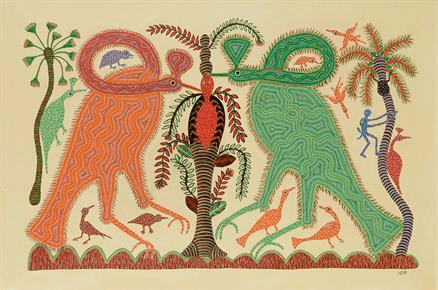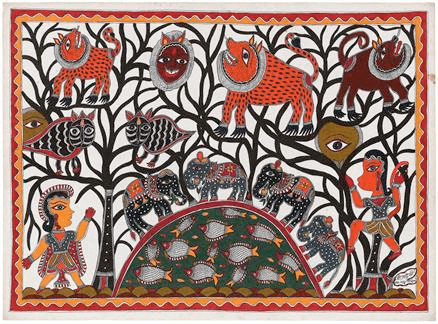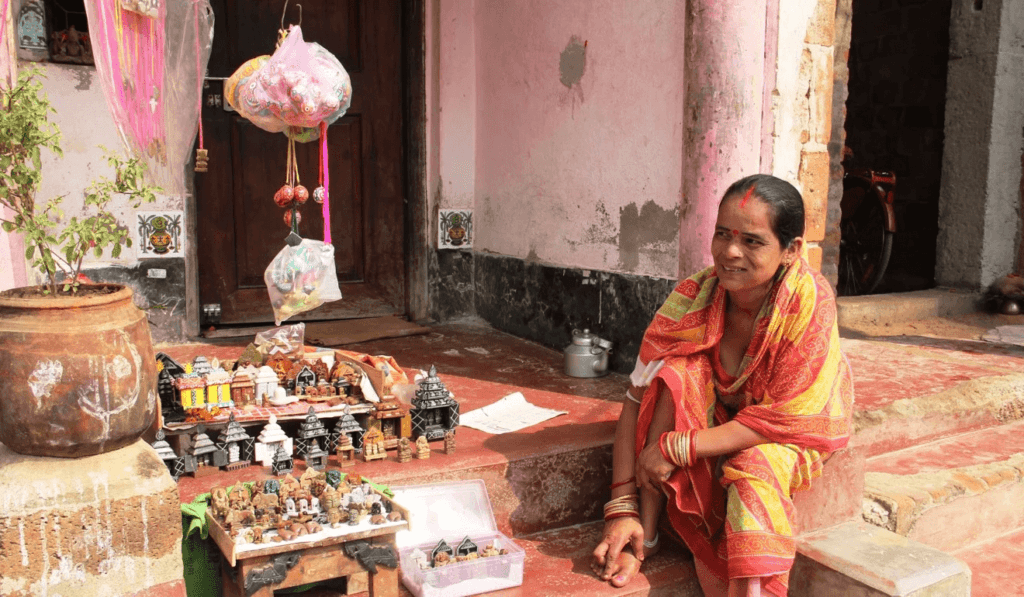
Your Cart
Relevance of Folk Art in Climate Crises

Historically, folk art has been a powerful means of expressing oneself. At the same time, it plays a huge role in preserving a community’s culture and tradition. While it may not be a solution to any crisis, it helps the individual and the community to cope with it in a way. It can provide motivation and relief in form of catharsis.
Crises today ------------
One of the crises the world is facing today is climate change. Given the high impact human activities have had on the planet’s ecosystems post the 18th century Industrial Revolution, this crisis is credited to us humans.
A recent concern was the pandemic which led to the loss of life and also adversely affected the global supply chains, hampering lives all over. During this time, the sciences and technologies played essential roles; and subsequently got us out of the global emergency. Similarly, the solution to the climate crisis is also expected from this STEM sector.
Here, the question arises, what is the role of the arts during such times? Does this field of study stay relevant in crises?

Role of Arts -------------
The data supporting the climate change thesis has been present for decades. However, the authorities have not taken effective steps to tackle the issue. Thus, even though math and sciences have shown the problem, they have not been very effective in pushing humans into mending their ways.
Often, the mindset that humans can do anything, even to the extent of conquering nature is the problem. This hubris of invincibility needs to be fixed. Here is where the arts have a role. Art can work through different sensibilities of different people and can positively impact their attitudes and perspectives on issues.
Role of Folk Art ----------------
To understand the gravity of climate change, one needs to understand that humans are a part of nature. Any change in our environment is directly affects us. This is visible in the increasing number of natural disasters that have been recorded in the recent past.
Through millennia, humans have lived in harmony with nature. Today, there are very few communities that are almost completely dependent on their environment. These are often indigenous communities that have preserved their traditional belief system. Their art is rooted in nature and revolves around the relationship between humans and nature, harmoniously co-existing with our natural heritage.
Moreover, this folk art had always focussed on local religious beliefs and values, which they use to understand the world. Exposure to ideas from these communities can help people gain new perspectives on the world and its workings. There are plenty of examples from the Indian folk arts.
### Gond Art

The Gond community primarily inhabits the central Indian state of Madhya Pradesh, with some living in neighbouring regions in the states of Chhattisgarh, Odisha, and Andhra Pradesh. As explained by Venkat Shyam ji in his Gond Maestro Course on RooftopApp, Gond art revolves around themes based on nature.
Venkat ji’s signature style, the semicircle and dot motif stands for the philosophy where the dot is representative of their chief deity, and semicircular patterns that seem to emanate from it are representative of all living beings and nature. Everything around them emerges from one point, thus, emphasising their belief in oneness with nature; and the harmonious relationship.
### Madhubani Art

Emerging from the Mithila region of India’s Bihar and neighbouring Nepal, the Madhubani art form combines bold colours with delicate strokes to create vivid art. These paintings are based on three main themes, namely, religious, social, and nature-based. The last of these three is the most prominent. Trees, birds, animals, and fish feature commonly across the other themes too. This is seen as an expression of the belief of how intrinsic nature is to the life and experience of an individual and the community.
### Warli Art

The Warli art form has its origins in the western Indian state of Maharashtra. Beginning as ritualistic art for celebratory events, Warli art is filled with depictions of surrounding flora and fauna. The representation of rural life, which is usually heavily dependent on nature, is also common in this folk art. These simplistic depictions of a life in harmony with nature capture the community’s belief that everything in nature is an embodiment of the same element.
Relevance of Folk Art in Climate Crises ---------------------------------------
Folk art can appeal to a wide range of audiences. Their simplistic depictions, clear focus on nature, and accompanying philosophies of oneness and interconnectedness are perfect to raise awareness about the climate crisis.

The new art movement of Ecological Art too aims at raising environmental awareness. However, it can often be seen as quite political and sometimes even hypocritical. This is in contrast to folk arts, which are rooted in nature, use natural materials for their creations, and the artists truly live harmoniously with their surroundings.
Folk arts can, thus, be used to appeal to the sensibilities of people, and nudge them towards mending their ways and effectively working to tackle the climate crisis.
If you wish to learn more about folk arts from India, we encourage you to check out our website rooftopapp.com. You can also check out our Instagram or download the Rooftop App from GooglePlay or AppStore.